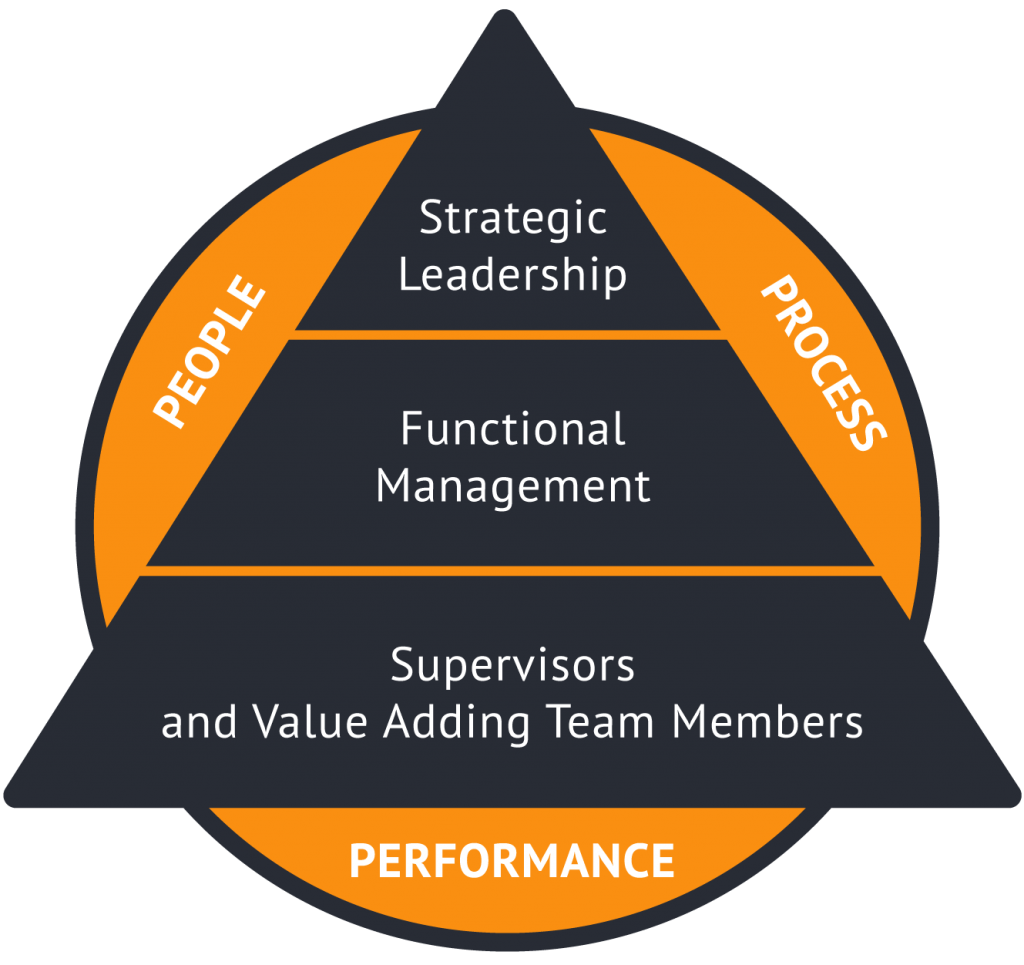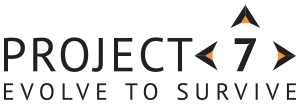
The Journey to Operational Excellence
Values are the heartbeat of your organisation. They set the character of your business and are unchangeable. However, are your stated values the lived experience of your employees?

The Hard Edge to Soft Skills
Read how soft skills drive success in industry, enhancing engagement, efficiency, and profitability.

Psychological Safety in the Workplace
Learn how fostering psychological safety at work boosts trust, innovation, and overall business performance.

Analysing Equipment Criticality for Optimal Storeroom Asset Management
Learn key strategies for analysing equipment criticality to optimise storeroom and asset management efficiently.

Building Powerful Teams: Strategies for High Performance
Discover strategies for building powerful, high-performance teams, focusing on leadership, trust, and effective communication.

Saving Your Business, Capturing Retiree’s Experience!
Explore effective ways to harness retirees’ experience for business continuity and success.

Achieving TPM Excellence,the Fast Jet Way
Bringing Fast Jet Operational Excellence to Continuous Process Manufacturing
I spent my first 30 years as a maintenance engineer in the Royal Air Force working on aircraft that initially entered service in the 1950s, including Hunter, Canberra and Vulcan. I continued to work through aircraft of the 1960s, ‘70s and ‘80s; before finally managing to work with the Force’s most cutting-edge platforms, such as the C130J Hercules and the Typhoon of the 2000s.
These aircraft defined over 50 years of aerospace technology and operational excellence, and though these aircraft represented considerable changes in technology, mission and reach.
One thing they all had in common was when required to meet a take-off time for troop movements to Northern Ireland, airlifts from Cyprus, combat in Baghdad, or delivering emergency aid relief around the globe. The aircraft and crews were ready to punch holes in the sky and achieve the mission at operational readiness tempo.
This mission availability was a function of the outstanding people and optimised processes that ensured aircraft reliability and, thus, mission availability. I am happy to say I learnt about TPM from working at such a unique level of excellence and with people of outstanding character and competence.
So, when I moved into the civilian world of continuous process manufacturing, I saw no reason to change my methods or philosophy.
When it came to ensuring we had a mission like focus to ensure our plant and machinery had maximum availability, ran at top speed and produced quality products right first time, every time. Thus, for me, mission focus turned into the three elements of business focus described in Overall Equipment Efficiency OEE, availability, quality and speed.
The Royal Air Force had a very mature TPM process based on history and a big budget, but this had not stopped me from applying this military focus to my civilian career, examples included:
We conducted Autonomous Maintenance (AM) on a rotary cutter that realised an 8% improvement in OEE and a 6% decrease in waste.
In another plant, an AM event and a value stream analysis improved OEE by 14%.
In a paper manufacturing mill, I facilitated a 15% increase in production speed after a planned shutdown deploying the same methods used to plan significant aircraft servicing, including initiating a work order system, detailed planning, critical path analysis and work order prioritisation.
How was this achieved?
I had a dual focus on incrementally growing the people and processes to achieve operational excellence. The people needed to be valued, respected and integral to the problem-solving process, and the processes needed to be owned and optimised by those carrying out those processes daily. We did not need to be ‘enabled’ to do something in the military. We constantly looked to expand our span of control to get things done.
Organisations that are ‘honest about empowerment’ and ‘meaningfully want to drive change from the ground up’ should apply this same philosophy.
By enabling our teams to become drivers of change rather than, as explained to me before I started the transformation at one plant, they felt like ‘victims of change’ we create true Operational Excellence.
In my civilian practice, I also recognise TPM is a journey, with the tools of the journey having to be adapted to meet the client at their point of need.
A journey may be short for a client who already demonstrates significant benefits from a certain level of maturity but welcomes the opportunity to improve continuously.
To a longer and more strategic journey for a client that needs to transform from having no TPM through stages such as FMEA, Preventative Maintenance Optimisation (PMO), and Predictive Maintenance (Pdm) to the integration of a Computer Maintenance Management System (CMMS) used to drive ongoing reliability through Failure Reporting and Corrective Action Systems (FRACAS). The constant is we match the development of these tools with the development and growth of leaders and teams who genuinely care.
Although I have spent almost 40 years on the Total Productive Maintenance (TPM) Journey,
I am still surprised at how quickly evolving to the next stage of TPM reaps measurable and
sustainable results.
My maintenance engineering experience has taught me that anyone can benefit from TPM even if they apply one element at a time of TPM and that they focus on sustaining that change committed to the formula of:

In civilian maintenance, as in RAF maintenance philosophy, TPM can enable any business to, as the RAF would say, ‘Rise Above The Rest’

Debunking the 5 Myths of Construction Productivity
For decades productivity performance in the construction sector has remained consistently below the UK average and significantly lags behind industries like manufacturing, transportation and even agriculture. The correlation between higher productivity and higher profitability for businesses is stark, and in construction, increased productivity directly results in delivering projects faster, better, safer, cheaper and greener. Much like Paul Krugman, the famous Nobel Memorial Prize winner in Economic Sciences, said, “Productivity isn’t everything, but in the long run, it’s almost everything.”
The wider industry is now waking up and beginning to grasp the size of the challenge and opportunity related to improving construction productivity. At Project7 Consultancy, we have conducted a study to generate real-world accounts and cross-functional industry insight to capture the challenges that continue to plague the sector. In this study, we identified five common themes that inhibit productivity enhancements. This article
will address each of these, uncover the root causes and share practical insight into how leaders can address these challenges.
Myth 01
The Construction Industry Understands Productivity & Utilises This Measure to Improve Business Performance
Our study found a near-universal lack of understanding about what defines productivity and how it impacts business performance. For clarity, here is a clear definition of construction productivity, highlighting its relationship with Gross Domestic Product (GDP). Crucially, this is the much-maligned figure used to underline the industry’s poor performance.
We measure construction productivity as the ratio between the economic output of work completed and the input of the resources (human, capital and material) consumed in the production of that output. At a high level, a productivity measure isn’t that useful as this could differ wildly depending upon each build. For example, fitting a bathroom out with gold-plated taps compared to brass taps would alter the productivity ratio. Even if both projects took the same amount of time and human resources, the output (cost) of the completed work
would be greater in the case of the gold-plated taps – resulting in a disproportionate ratio.
To benefit from measuring productivity, Construction Leaders need to understand what drives the measure and gain better control of the inputs to productivity performance for their critical processes, platform solutions and products, including;
- The efficiency of Human Capital (Value Adding vs Non Value Adding time)
- The efficiency of production (Plan Percentage Complete)
- The cost of rework, defects and poor quality
- Pre Manufactured Value
- Scrap, waste and excess inventory
You cannot improve what you don’t measure. Understanding the critical inputs to productivity performance will help Construction Projects measure the right things to recognise improvements to project profitability, achieve right-first-time outcomes and create a commercially sustainable industry.
Myth 02
Modern Methods of Construction (MMC) & PDfMA are the Panacea to Productivity Improvement
As mentioned in our first myth, increasing the percentage of Pre Manufactured Value on our projects and, in turn, reducing the time, cost and resources required on site compared with traditional construction will be transformative in terms of increasing productivity performance across the industry. However, MMC are not the holy grail of improving productivity.
There are still significant improvements that Construction Leaders can still make through incremental small-step improvements (Daily Kaizen) that can transform industry performance. In particular, small to medium-sized contractors must not see the expense and R&D required to implement MMC & PDfMA as a blocker to raising the performance bar.
Construction Leaders should ask themselves; do I positively challenge my teams to improve their processes by a few seconds every day and do we have a Lean Operating System which manages, monitors and controls this process?
Myth 03
Construction Projects Optimise Data Capture & Presentation to Create Measurable Performance Improvement
The digital transformation age is gripping the construction industry, and the availability and range of data accessible to our projects are immense. So why do we see construction projects with masses of data but limited actionable insights and recurring problems? What is the purpose of data? We generate data to enable us to make accurate decisions, and over time, those actionable insights will develop wisdom through continuous learning.
In our experience, we see organisations trapped in the analysis paralysis of data and spending vast amounts of time and resources managing the processes surrounding this without delivering any benefit. We know that operationalising data through effective Tiered Visual Performance Management and driving actionable insight at the shortest interval of control creates a social mechanism for regular performance dialogue and a platform for continuous learning.
Construction Leaders should scrutinise the data their projects produce to understand how to capitalise on something that went well or how to improve something that was a deviation to plan or a standard. All dashboards should include action, owner, deadline and status; if they don’t, they’re not adding value.
Myth 04
The Culture in Construction is Aligned to a High-Performing Operating Environment
During our study, we noticed that 60% of respondents highlighted that culture in construction was
not conducive to a Continuous Improvement mindset and that leadership behaviour and the complex
nature of construction was a barrier to higher productivity. At a strategic level, the ambition to improve
the industry is growing. However, at a tactical level, there are simple behavioural shifts that frontline
leadership can exhibit, which will begin to build the climate required to foster Continuous Improvement.
We have listed two leadership principles that construction frontline leaders can implement without
requiring business investment or organisational changes.
Leadership Presence:
You are the shadow you cast.
Three elements make up Leadership Presence, and leaders should understand how their thinking, words and actions can create a motivating presence in the work arena.
- Adopt the concept of Go, Look, See for routine visits to the value-adding work arena.
- The standard you walk past is the standard you accept – Leaders set the behavioural standard by leading by example.
- Showing commitment to change by involvement.
Coaching for Success:
Leaders should coach, not fix.
Leaders must implement a systematic coaching approach to daily problem solving to develop individuals to find their own solutions and provide a daily management system that:
- Detects all deviations from the standard and focuses teams on problem-solving and Continuous Improvement.
- Provides a systematic daily opportunity for the Leader to Coach work group members.
- Includes a primary visual display to show current performance, tactical improvement plans and results.
Myth 05
Construction Projects are Excellent at Problem Solving
Practical problem solving requires people to gather a profound understanding of the current state and methodically implement improvement measures to address the root causes of those issues. To ensure they do not return, individuals continuously test their results to check if they have had the desired effect and may implement further corrective actions if required.
Fire fighting requires none of the above absorbing massive amounts of time and resources to leap from one fire to the next, and rarely addresses the actual root causes of problems, so they will inevitably return. During our study, the majority of the frontline leadership we surveyed said they don’t have time to problem solve or do not have the requisite skills for practical problem solving following the scientific method.
The problem-solving deficit in construction is a byproduct of the systemic issues highlighted in this article. Without resolving these, organisations will continue to compound cost and schedule pressures, ignore stress and burden on site supervision and increase rework and safety instances.
Construction Leaders, think about ensuring your teams are equipped with basic level 1 problem-solving techniques.
01
Understand the
cause of a problem.
02
Capture and implement
the immediate steps
to stop the issue from
hurting the project.
03
Capture and implement
the longer-term actions
required to ensure the
problem never returns.
04
Document and share the
new standard ways of
working.
To close, we want to highlight that our study reaffirmed people’s passion and enthusiasm for working in the construction industry. We recognised a genuine desire to improve and influence the change required to create a sustainable construction model which can continue to bring about generational social value and transform the built environment. We hope this thought leadership article provides a powerful insight into how to address the sector’s challenges.

How to Reduce Construction Rework Costs
The long-standing criticism of the Construction industry for its poor productivity levels, high cost of rework and its command and control approach to job site coordination and planning has unfortunately remained consistent over the years. At the turn of the century, Sir John Egan published ‘Rethinking Construction’, highlighting the urgent need to address spiralling Construction costs, schedules, and defects. Several high profile reports have since reiterated this criticism, most notably the McKinsey Productivity Imperative Report, and yet, the data suggests that little has changed.
A recent international study indicates that the measured direct costs of avoidable errors are in the order of 5% of the project value. If you overlay these poor performance factors against an industry in the UK with average profit levels of just 3%, this highlights the immediate and pressing case for change.
This article offers insight into what practical measures construction companies can take to address the productivity imperative, reduce rework costs, and begin the journey to a high-performance culture.
The UK Construction sector spends £Billions every year on the cost of poor quality, rework, and error, with wide-ranging impacts and root causes. In our experience, these range from outdated and ineffective planning, communication & coordination throughout the Design and Construction phases to inadequate attention paid to quality originating from increasing cost and schedule pressures and poorly executed supervision.
Much of these require significant strategic invention at a political, client owner and organisational level to influence the change necessary. The industry is at the beginning of a long journey with many of these initiatives, including:
- Digital Transformation (Digital Twins, digital design integration, autonomous plant, and digitised construction processes).
- Modern Methods of Construction (PDfMA, offsite manufacture and onsite assembly).
- Project13 (Outcome focused project delivery models, risk/reward commercial incentivisation and value-based smart procurement).
Integrating these long-term solutions will bring about significant change across the infrastructure landscape. However, they will take time. There are tactical measures Construction companies can implement now that are proven to deliver notable benefits in reducing rework and improving job site productivity and delivery performance.
We have highlighted our top 3 tips on how to harvest the low hanging fruit from the poor productivity tree:
01 Make Problem Finding a Celebrated Behaviour:
How do we often react when someone arrives with a problem? What are our first thoughts? Likely an eye roll or an exhausted gasp at the idea of having to fight another fire – This cynical approach increases the likelihood of hiding poor quality or, worse, encountering latent defects later on. Construction Leaders must begin to change leadership attitudes to make improvement, adaptation, and evolution part of everyday work; firstly, leaders must make ‘problem finding’ a celebrated behaviour.
When someone comes to you with a problem, instead start with, “thank you for bringing this to my attention. Could you tell me the target condition of this operation and what are the obstacles that prevent you from achieving this?”. By following through with an improvement coaching cycle, leaders will spend much less
time fire fighting and more time coaching their army of problem solvers.
02 Short Interval Control Drives Short Interval Learning:
One of the most pointless exercises to occur on infrastructure projects is the creation of an end of project Lessons Learned log. In most cases, this excel document is considered a tick box exercise and will be archived in the graveyard of dead Lessons Learned logs, never to benefit another project again. The problem with leaving our learning until quarterly reviews or end of lifecycle closedowns is that in Construction, we are unlikely to benefit from even the best ideas as the process will have elapsed. Therefore, we will have missed our window of improvement opportunity.
Compounding this issue is the inflexible nature of Construction schedules. Construction programmes are conducted over vast geographies and timeframes and under complex circumstances that make creating detailed forecasting plans complicated and limit the team’s ability to react to inevitable changes. Mike Tyson once said, “everyone has a plan until they get punched in the face”. To counter this, Construction teams first must make their performance visual and measure production at the shortest interval of control by properly deploying the Last Planner System* (Collaborative Planning) and Tiered Visual Performance Management. This approach to Lean planning stimulates improvement opportunities through short learning cycles, which, when acted upon, promptly drive improvements in productivity, reliability, and quality.
* Last Planner System Definition: The Last Planner System is a Lean production planning and control approach designed to produce predictable workflow and rapid learning in the construction and commissioning of projects.
03 Process Confirmation Today Prevents Process Error Tomorrow:
Quality is never an accident; it results from high intention, sincere effort, intelligent discretion, and skilful execution.
Transforming the sector’s approach to Built-in Quality by capturing, containing, and controlling error at its point of cause and permanently addressing the root causes will go a long way to clawing back some of the lost revenue on Construction programmes. Although we have seen developments in safety-critical sectors such as Nuclear Construction, moving to 100% inspection is not the solution to the rework crisis in the Construction industry, as this approach adds excessive cost and schedule pressures to an already stretched environment.
Process Confirmation Today Prevents Process Error Tomorrow:
Additionally, when an error occurs following an investigation, it is often found that the process wasn’t ‘robust enough’, which leads to layers of bureaucracy being added to the process. This effort is usually fruitless as the process wasn’t being followed in the first place, so making it even more complicated won’t solve the problem. Achieving high-quality performance requires more than robust processes, and to address the high levels of rework and error in Construction, our Leaders must:
Set the Culture:
Make the principle of Right First Time a way of thinking and empower employees to take pride in their work. This mindset is the baseline from which Leaders can add more complex systems to reduce and eliminate errors from occurring, such as Andon support, Standardised Working Methods, and Error Proofing.
The principle of Right First Time is to:
- Never accept poor quality from your supplier (internal & external).
- Never create poor quality within your processes.
- Never pass on poor quality to your customer (internal & external).
Lead the Change:
Make Process Confirmation & Go, Look, See a mandatory placeholder in your weekly Leadership standard diary. Firstly, Process Confirmation is not an audit; it is a coaching opportunity to set transparent process & performance expectations, role model the value of standardisation & process discipline and understand how your employees are thinking. Secondly, a Go, Look, See is not a chance to ceremoniously prance around the site like the Queen. Go with purpose, intent, and desire to see the waste for yourself and seek understanding by
showing respect and asking why. Leaders should coach and not fix.
To summarise, construction firms can set the precedence for high performance and seriously address the sector’s challenges by embedding the cultural enablers and operating system at a tactical and enterprise-level aligned to a Lean thinking way to improve safety, quality, and delivery performance. In our experience, start your journey by implementing an effectual short interval control approach with visual and candid performance
dialogue. Empowering project teams with those five connected conversations will immediately benefit site productivity, planning reliability, and reduction in rework and defects.

Lessons the Construction Industry Can Learn from Lean Manufacturing
To put this into context, in 1984, each employee of Toyota Motor Company raised and delivered on average 45 improvement ideas … How does this statistic compare to your Company?

